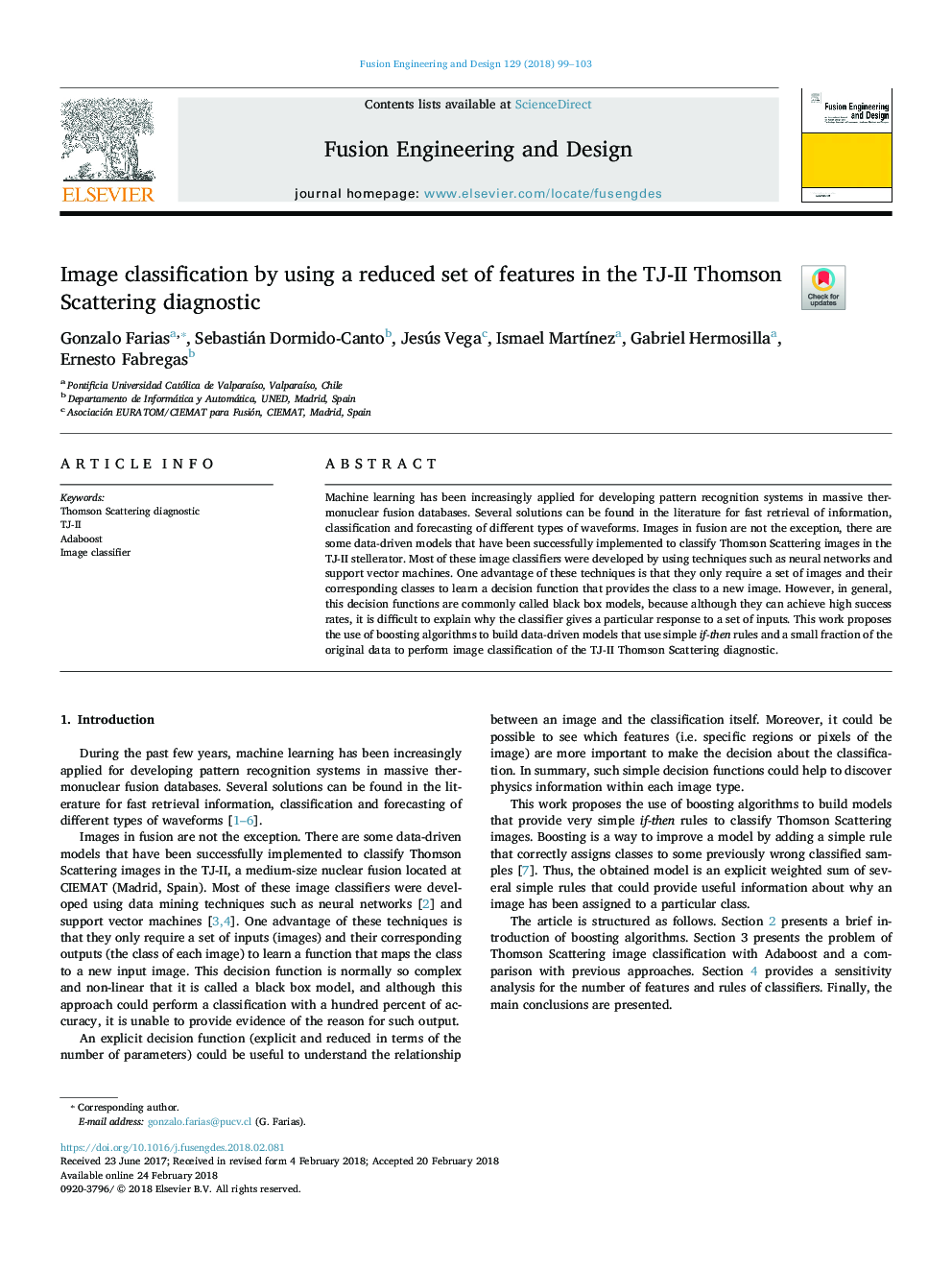| Article ID | Journal | Published Year | Pages | File Type |
|---|---|---|---|---|
| 6743392 | Fusion Engineering and Design | 2018 | 5 Pages |
Abstract
Machine learning has been increasingly applied for developing pattern recognition systems in massive thermonuclear fusion databases. Several solutions can be found in the literature for fast retrieval of information, classification and forecasting of different types of waveforms. Images in fusion are not the exception, there are some data-driven models that have been successfully implemented to classify Thomson Scattering images in the TJ-II stellerator. Most of these image classifiers were developed by using techniques such as neural networks and support vector machines. One advantage of these techniques is that they only require a set of images and their corresponding classes to learn a decision function that provides the class to a new image. However, in general, this decision functions are commonly called black box models, because although they can achieve high success rates, it is difficult to explain why the classifier gives a particular response to a set of inputs. This work proposes the use of boosting algorithms to build data-driven models that use simple if-then rules and a small fraction of the original data to perform image classification of the TJ-II Thomson Scattering diagnostic.
Related Topics
Physical Sciences and Engineering
Energy
Energy Engineering and Power Technology
Authors
Gonzalo Farias, Sebastián Dormido-Canto, Jesús Vega, Ismael MartÃnez, Gabriel Hermosilla, Ernesto Fabregas,
